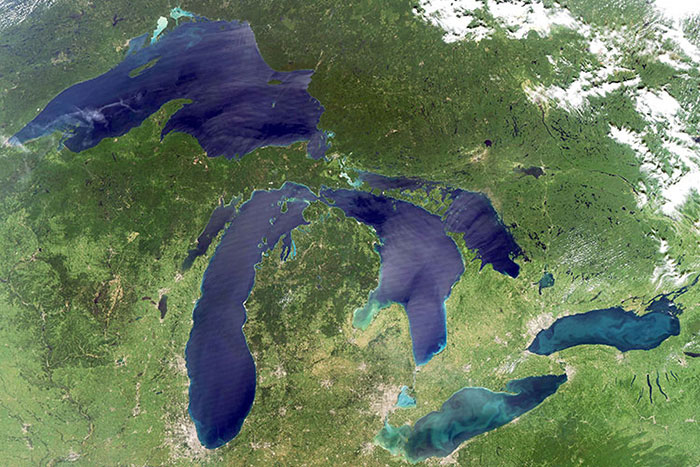
Matt Doll, Minnesota Environmental Partnership
A few weeks ago, the Healing Our Waters-Great Lakes Coalition (HOW) published its 2020 Great Lakes Platform, a list of policy priorities that it asks Presidential candidates and other office-seekers to support. This was followed by HOW’s Director, Laura Rubin, penning an August 28 letter (fourth one on the page) to the New York Times in support of the platform. MEP and several member organizations are active members of HOW and Executive Director Steve Morse is currently a co-chair of the HOW Governance Board. The HOW Coalition identifies five major action planks that would help protect and restore this region, home to tens of millions of people and more than a fifth of the world’s surface fresh water.
The 2020 election will be a deeply pivotal one on a multitude of issues, and while it may not be the most visible issue of the campaign, the health of the Great Lakes is critical to the future of our country. Whether we can protect our greatest freshwater resources will help determine our adaptation and response to climate change, the health of our people, our food systems, and our economic path.
Here are the planks that HOW lays out, and what they mean for Minnesota:
First, the platform calls for $475 million in annual federal funding for the Great Lakes Restoration Initiative, a major infrastructure and ecological protection program that has enjoyed bipartisan support for nearly a decade. In the recent past, the GLRI has been funded at $300 million, despite cuts proposed by the Trump Administration. The GLRI has had significant positive results for the environment and economy of Minnesota’s North Shore, especially in the Duluth area, and MEP has strongly supported its continued success and expansion.
The next plank is perhaps a larger ask, but an urgent one: a plan to address the Great Lakes region’s need for $179 billion worth of upgrades and fixes to water infrastructure. As we’ve seen in places like Flint, Michigan, being adjacent to the greatest freshwater resource in the world is no guarantee of safe drinking water. Minnesota has our own pressing need for better water systems, and a plan like this would help us cope with that pressure.
The platform calls for urgent action to arrest the spread of aquatic species like Asian carp, which devastate ecosystems and fishing industries. So far, Lake Superior has had the least trouble with invasive organisms, but if measures like blocking carp and addressing ballast water from shipping that carries these species aren’t enacted, we could see widespread harm in Minnesota’s freshwater sea.
HOW also identifies health-threatening pollutants like lead, PFAS, and mercury as requiring urgent federal attention, and calls for better enforcement and tougher standards for water quality. For an area like Minnesota’s St. Louis River, where mercury contamination has entered the human food chain via fish, better water protections would be a much-needed reversal of a frightening trend accompanied by governmental agency inaction.
Lastly, the platform calls for action on algal blooms, the phosphorus-fueled surges of algae that leave behind toxic, deoxygenated “dead zones” in vast swaths of lakes, which notoriously threatened the health of Toledo, Ohio several years ago. Algal blooms in the Great Lakes are similar to those in the Mississippi watershed and the Gulf of Mexico, and both are largely the result of an industrial agriculture system that lets fertilizers wash off the land and into our waterways, poisoning the resources downstream. Conservation and fertilizer programs can help with this problem, but it will also require us to rethink what type of crops we plant on our lands and watersheds. MEP has long been committed to leading on this work of developing and using more continuous living cover crops in Minnesota.
MEP believes that candidates for the Presidency, Congress, and state offices should study and commit to supporting this platform. They should also go further and address the greatest overall threat to our Great Lakes: the climate crisis. Water temperatures on the lakes are warming fast, and the waterline and weather changes are wreaking havoc on places like Duluth. Ambitious climate action is a fundamental need in order to keep our water drinkable, our ecosystems viable, and our communities healthy.